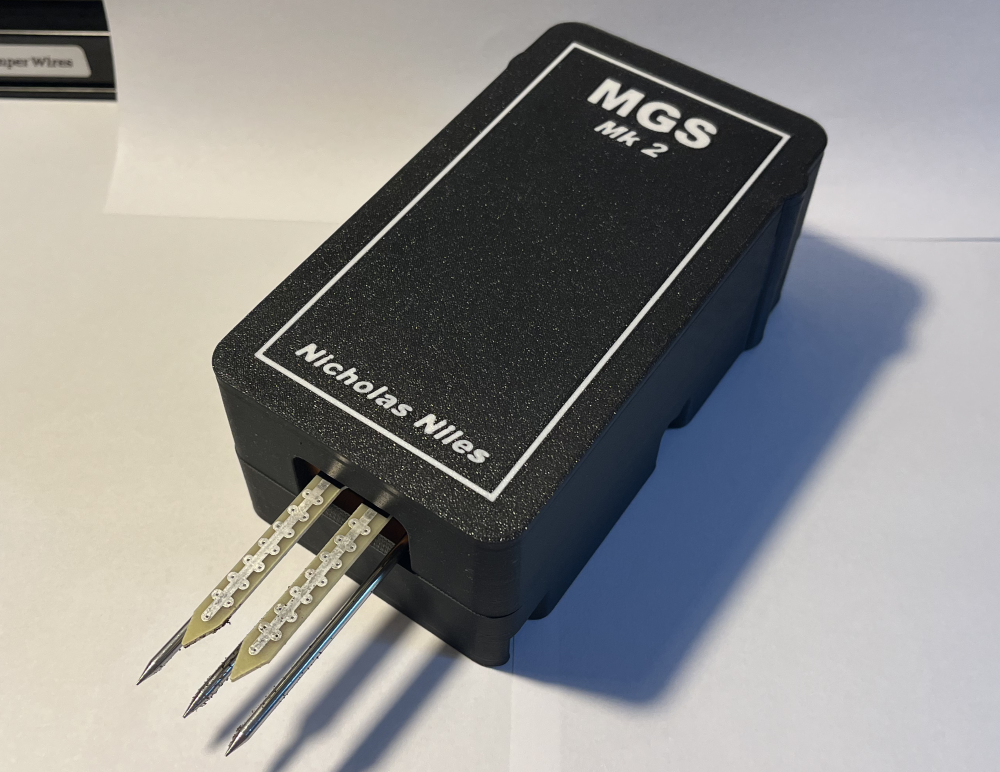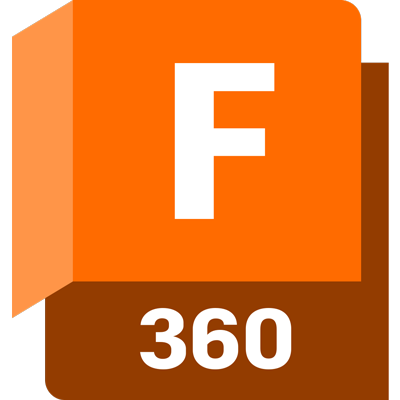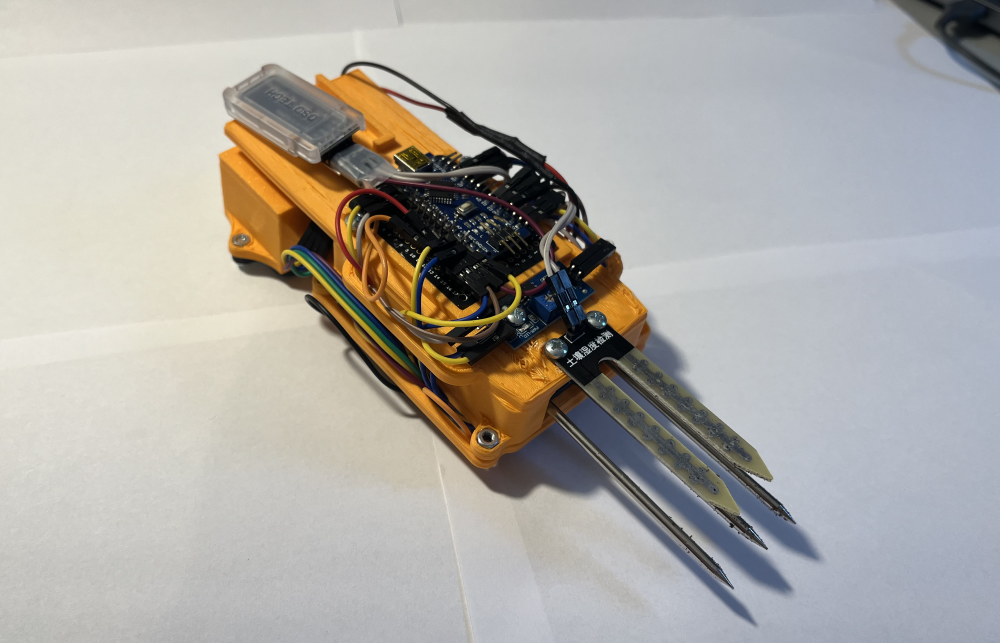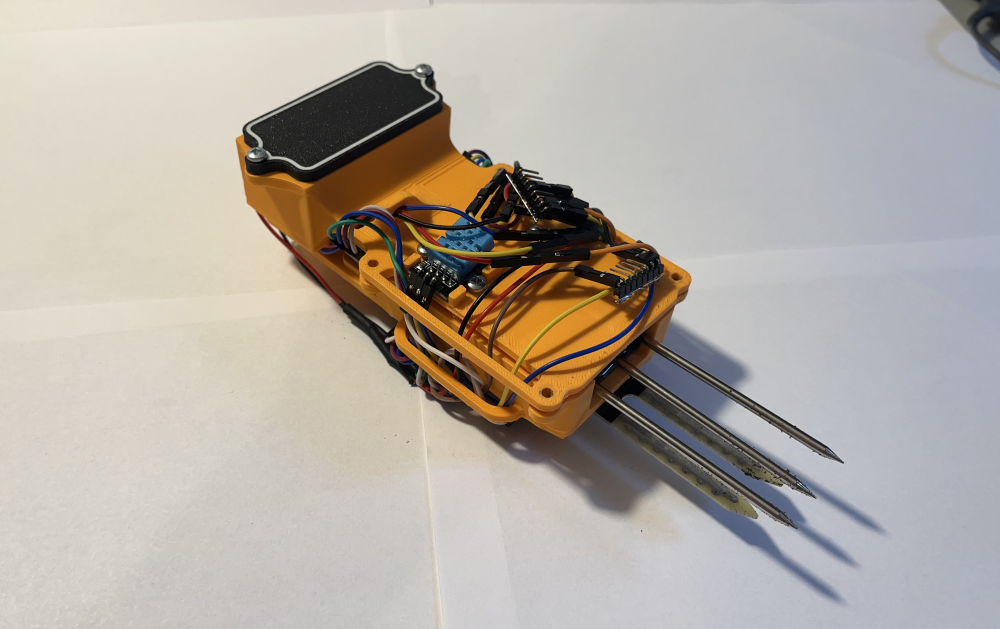Soil Analyzer
Device
The Soil Analyzer is a small handheld probe device that detects the Nitrogen, Phosphorus, and Potassium content in the soil within +-2% accuracy in mg/kg. It also detects the surrounding environment's temperature and humidity, and finally the soil moisture. It then connects to a laptop via bluetooth and displays all of this data to the user via a Unity program I wrote.







